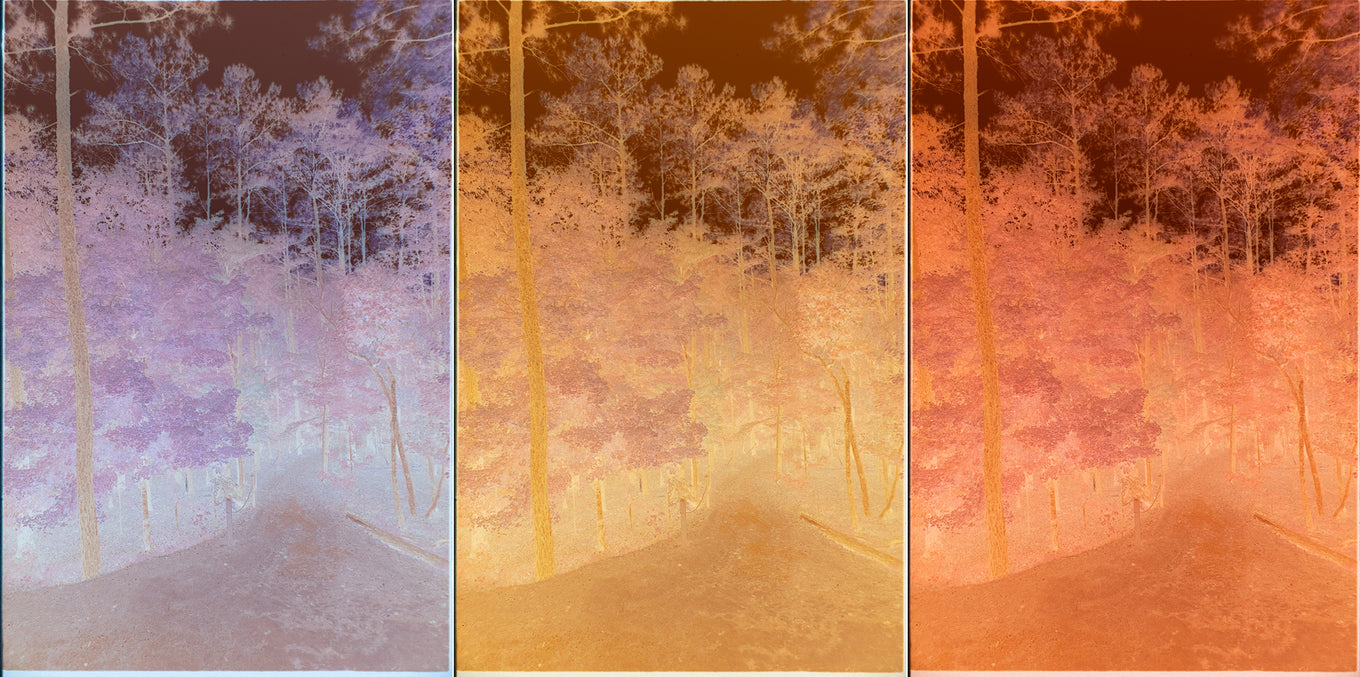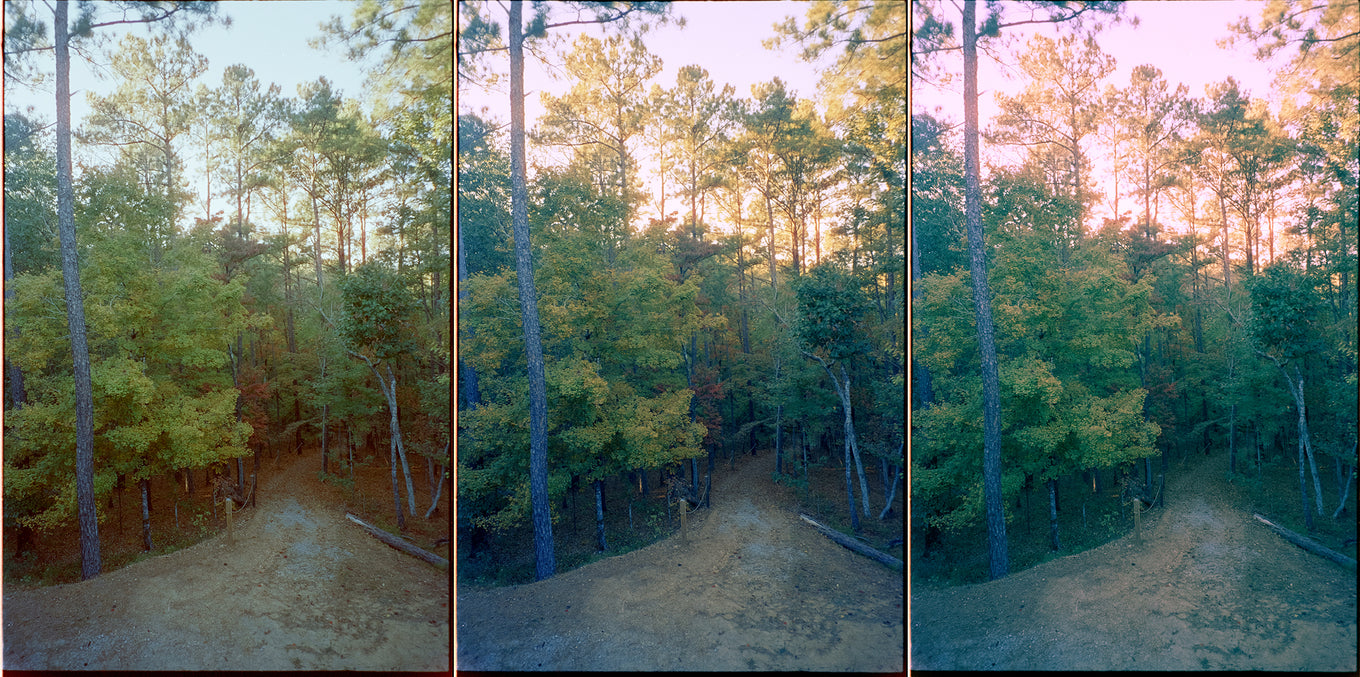Features
-
High quality LED light source for digital camera scanning of photographic film
CRI of 95+ for high color accuracy
Brightness of EV 15+
Adjustable to 3 different color temperatures to properly suit different types of film (color negative, B+W, slide)


Product Details
FILM SCANNING BRIGHTER THAN EVER: Introducing the CineStill CS-LITE!
An affordable, easy-to-use light source for digital camera scanning.
The CS-LITE Camera Scanning Light Source is a compact LED light source specifically designed to provide film photographers with higher-quality light output and improved color management when scanning their favorite 35mm and medium format films with a digital camera.
The CS-LITE features a CRI of 95+ for high color accuracy and a brightness of EV 15+ to provide sufficient illumination for even the densest of negatives. What sets the CS-LITE apart from other light sources on the market is its ability to adjust color temperatures to properly suit different types of film, such as color negative, color positive, and B&W. These are controlled directly from the built-in remote control of the CS-LITE.
| CS-LITE Color Temperature: |
Calibrated for: |
| Cool Light mode |
Color Negative film |
| White Light mode |
B&W film, Slide film processed in CineStill D9 DynamicChrome 1st Developer 1:1 |
| Warm Light mode |
Slide film processed in standard E6 chemistry or CineStill D6 DaylightChrome 1st Developer |
The Cool Light mode reduces the orange mask that is present in color negative film like CineStill 800T, 400D, and 50D, providing color-balanced scans with better color separation and less noise.
The White Light mode is ideal for scanning B&W, as well as slide film that has been processed with the warm-tone 1:1 dilution of the CineStill D9 DynamicChrome 1st Developer.
Lastly, the Warm Light mode is perfect for scanning slide film that has been processed with standard E6 chemistry (or the CineStill D6 DaylightChrome 1st Developer), as the tungsten-balanced light can produce richer tones and enhanced color separation, especially within the red channel.
The CS-LITE also pairs perfectly with the include CS-LiteMask as well as the additional CS-LiteBrite+ (sold separately).
The CS-LiteMask is our universal film carrier mask that pairs with pre-existing film carriers like those made by VALOI, Negative Supply, Lomography, and more. Masking around the edges of the carrier helps to eliminate excess spill light, reducing unwanted reflections and maintaining uniformity across the entirety of your scans. The VALOI 360 film carriers fit perfectly into the mask, creating a compact, stabilized digitizing platform. The CS-LiteMask comes included with the CS-LITE.
The CS-LiteBrite+ is a set of 2 light enhancement sheets designed to increase directional light output for camera scanning through collimation, which reduces spill light and enhances diffusion uniformity, and our NEW Color Negative Calibration Sheet which increases color accuracy when scanning color negative film. A single CS-LiteBrite+ sheet placed directly on any diffused light source will increase brightness by more than 60%. Stacking both sheets in the correct orientation yields 130% increased light output for diffused light sources. That’s 2.3X (about one stop) brighter, resulting in sharper and higher quality scans. The CS-LiteBrite+ is not included with the CS-LITE.
Includes:
1x CS-LITE Light Source
1x CS-LiteMask Universal Carrier Mask
External Unit Dimensions:
Length: 6.5 in
Width: 4.4 in
Height: 0.8 in
Illuminated Area Dimensions:
Length: 5 7/8 in
Width: 3 3/4 in
Download CS-LITE Complete PDF Instructions
Camera Scanning Considerations:
Camera Body
Just about any semi-modern, interchangeable-lens digital camera will work great for camera scanning. There are many mirrorless or DSLR options to choose from with large lens catalogs, tethered capture capability, and excellent image quality. Some high end cameras can even use pixel stitching to deliver extremely high levels of resolution.
Macro Lens
For camera scanning, the one real requirement is that your lens focuses close enough to capture the entire frame. For full frame cameras and capturing 35mm film, the term “1:1” designates a lens that will reproduce the 35mm frame exactly onto the full frame digital sensor. With crop-sensor bodies, 1:1 lenses focus even closer. Outside of reproduction factor (1:1), also look out for lenses that are sharp, have good color reproduction, limit internal reflections (modern coatings), and have very little vignetting. Finally, it’s generally best to use your macro lens stopped down 2-3 stops from wide open, as this gives a good combination of depth of field and sharpness.
Software for Negative Conversion
There are a few plugins and standalone programs for converting captured negatives into positive images. Some older and some newer, all of them try to harness the color science based in darkroom paper to various degrees. After all, even a professional lab scanner is essentially a digital camera and a light source. Most of the options presented here allow you to download a demo version to try before you buy and determine which one best suits your workflow.